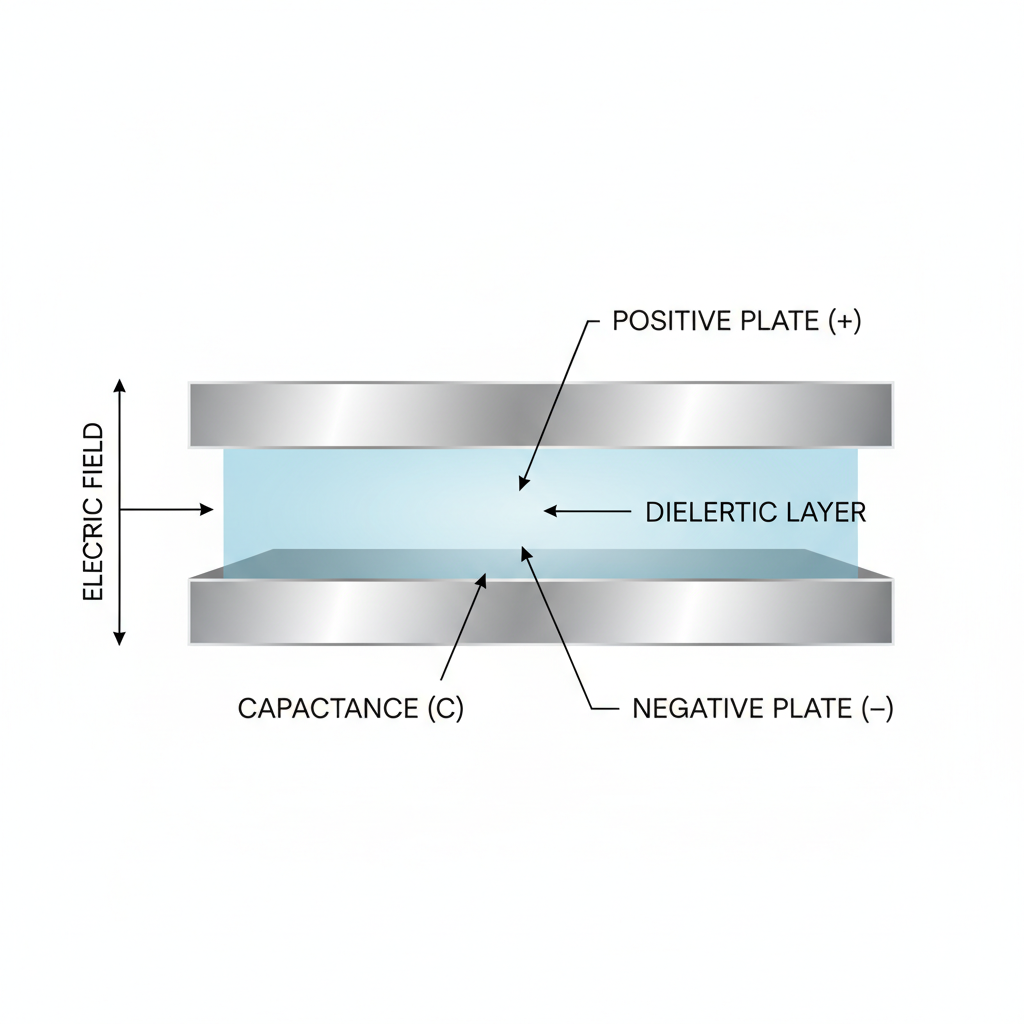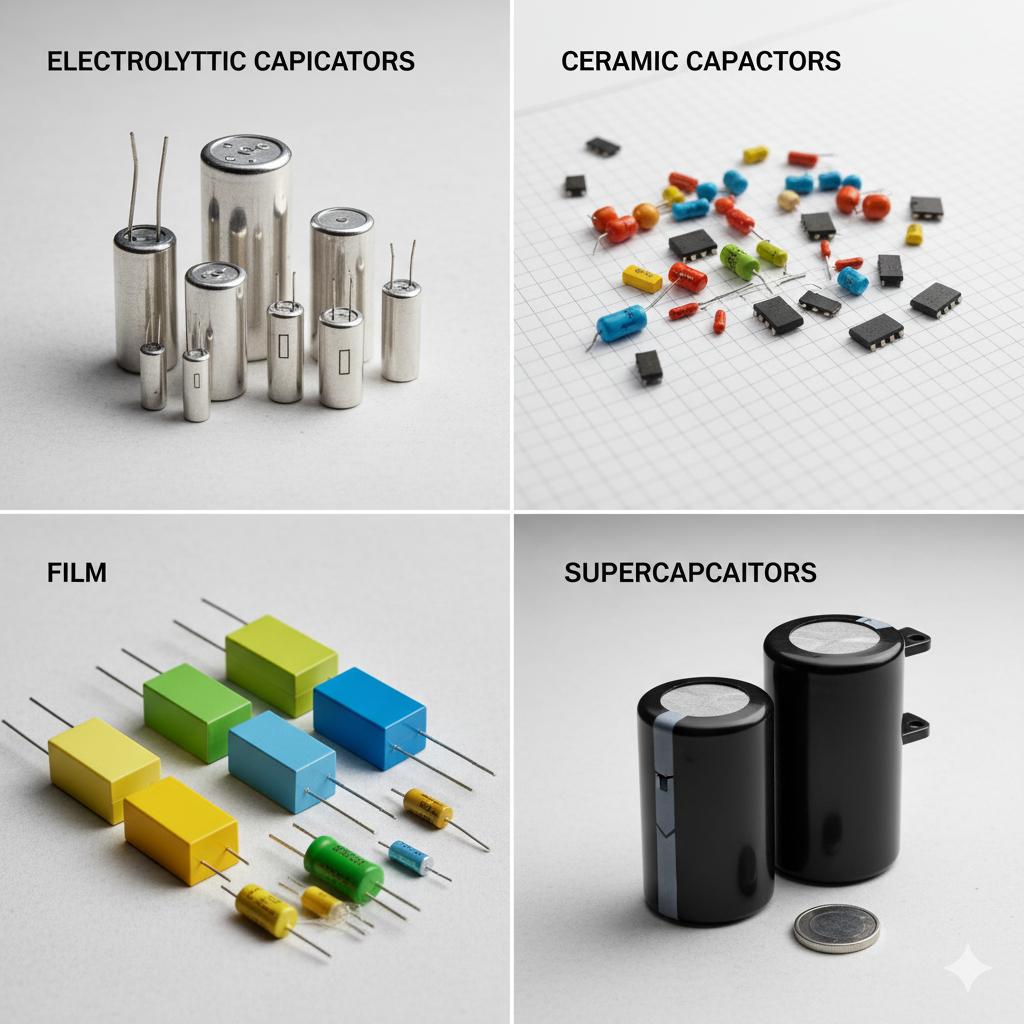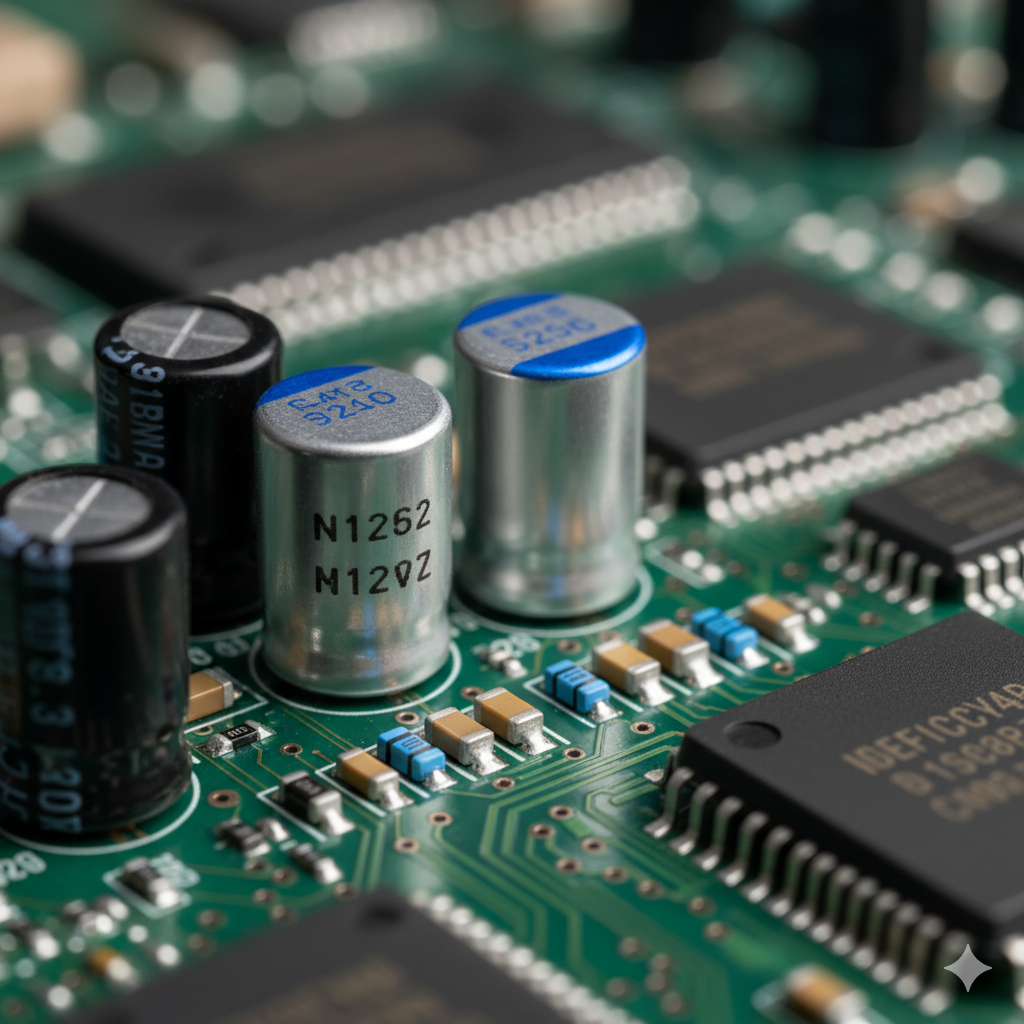Complete Guide to Capacitors: Types, Formulas, Working & Applications
Capacitors are among the most fundamental components in electrical and electronic engineering. They are passive components, meaning they do not generate energy but instead store and release it when needed. Whether you are an electronics hobbyist, a student, or a professional engineer, understanding capacitors is crucial for designing efficient circuits and solving real-world electrical challenges. In this in-depth guide, we will cover everything about capacitors — their history, working principle, types, formulas, applications, safety, testing, troubleshooting, and even their role in the future of technology. This comprehensive blog will provide you with a solid foundation that is both beginner-friendly and technically accurate.
Table of Contents
- History of Capacitors
- How Capacitors Work
- Construction of a Capacitor
- Types of Capacitors
- Capacitor Formulas Explained
- Example Calculations
- Applications in Real Life
- How to Select the Right Capacitor
- Testing & Troubleshooting
- Safety Considerations
- Future of Capacitors
- Frequently Asked Questions
- Related Tools
History of Capacitors
The story of capacitors begins in the mid-18th century. In 1745, Pieter van Musschenbroek of Leiden, Netherlands, invented the Leyden jar — the first device that could store electrical charge. This simple jar lined with metal foil acted as a storage vessel for static electricity and became the foundation of capacitor technology.
Over the next two centuries, capacitors were refined and used in telegraph systems, radio circuits, and early electrical experiments. By the 20th century, new materials such as ceramic, paper, mica, and later electrolytic designs made capacitors smaller, cheaper, and more reliable.
Today, capacitors are everywhere: in your smartphone, in renewable energy grids, inside medical devices, and even in spacecraft. Their evolution reflects the progress of electrical engineering itself.
How Capacitors Work
A capacitor stores energy in the form of an electric field between two conductive plates separated by an insulating material called a dielectric. When a voltage is applied across the plates, electrons accumulate on one plate, creating a negative charge, while the opposite plate develops a positive charge. This charge separation creates an electric field and stores potential energy.
- Surface Area: Larger plate area increases capacitance.
- Plate Distance: Smaller distance between plates increases capacitance.
- Dielectric Constant: Better dielectric materials (like ceramic or mica) increase capacitance.
Formula: C = ε × A / d, where C = capacitance (Farads), ε = permittivity of dielectric, A = plate area, d = distance between plates.

Construction of a Capacitor
A basic capacitor consists of three key parts:
- Conductive Plates: Usually made of aluminum or other metals, these plates store charge.
- Dielectric Material: The insulating medium between the plates, such as ceramic, paper, mica, or electrolytes.
- Encapsulation: Protective casing that provides mechanical strength and protects the capacitor from moisture and damage.
The choice of dielectric defines the capacitor’s properties, such as capacitance range, voltage rating, stability, and cost.

Types of Capacitors
Capacitors come in many types, each suited for specific applications. Below are the most common:
- Ceramic Capacitors: Cheap, compact, used in general electronics and high-frequency circuits.
- Electrolytic Capacitors: Large capacitance, polarized, ideal for power supply filtering.
- Tantalum Capacitors: Stable, reliable, smaller than electrolytics but more expensive.
- Film Capacitors: Long lifespan, stable values, used in precision circuits.
- Supercapacitors: Very high capacitance, used in energy storage, renewable energy, and backup power.
- Mica Capacitors: High stability, low loss, used in RF and microwave circuits.
Capacitor Formulas Explained
Key formulas for understanding capacitors include:
- Charge stored: Q = C × V
- Energy stored: E = ½ × C × V²
- Series combination: 1/Ceq = 1/C1 + 1/C2 + ...
- Parallel combination: Ceq = C1 + C2 + ...
- Time constant: τ = R × C (important in charging/discharging circuits)
Example Calculations
Suppose you have a 100 μF capacitor connected to a 12 V supply. Using the formula E = ½ × C × V²:
E = 0.5 × 100 × 10⁻⁶ × (12)² = 0.0072 Joules. This means the capacitor stores 7.2 millijoules of energy.
Applications of Capacitors
Capacitors have countless applications, including:
- Power Supply Filtering: Smoothing voltage fluctuations in DC power supplies.
- Signal Coupling: Passing AC signals while blocking DC.
- Timing Circuits: Used with resistors to set time delays.
- Motor Starters: Providing phase shift for induction motors.
- Renewable Energy: Energy storage in solar and wind systems.
- Electronics: Found in smartphones, radios, televisions, and laptops.

How to Select the Right Capacitor
Choosing a capacitor depends on several factors:
- Capacitance Value: Based on circuit requirements.
- Voltage Rating: Must exceed operating voltage.
- Type: Ceramic, electrolytic, film, or supercapacitor depending on use.
- Size & Cost: Consider space and budget.
- Stability: For precision circuits, low tolerance capacitors are better.
Testing & Troubleshooting Capacitors
To check if a capacitor is good:
- Visual Inspection: Look for bulging, leaks, or burns.
- Multimeter: Measure resistance; faulty capacitors show short or open.
- LCR Meter: Gives accurate capacitance value.
Safety Considerations
Capacitors, especially large electrolytics, can retain charge even after power is removed. Always discharge capacitors before handling. Use insulated tools, and follow correct polarity for polarized capacitors.
Future of Capacitors
With the rise of renewable energy, electric vehicles, and high-frequency electronics, capacitors are evolving rapidly. Graphene-based capacitors, nanocapacitors, and supercapacitors are expected to revolutionize energy storage and power delivery in the coming decades.
Frequently Asked Questions
1. What is the main function of a capacitor?
It stores and releases energy, smooths voltage, and filters signals in circuits.
2. Can a capacitor replace a battery?
No, capacitors store small amounts of energy temporarily, while batteries store larger energy long-term.
3. Why do capacitors fail?
Overvoltage, overheating, incorrect polarity, or aging can cause failure.
Conclusion
Capacitors may look small, but their impact on modern technology is huge. From storing energy and filtering signals to enabling renewable energy and electric vehicles, capacitors remain a cornerstone of electrical and electronic design. By understanding their types, formulas, applications, and safety, you can confidently apply capacitors in any project.